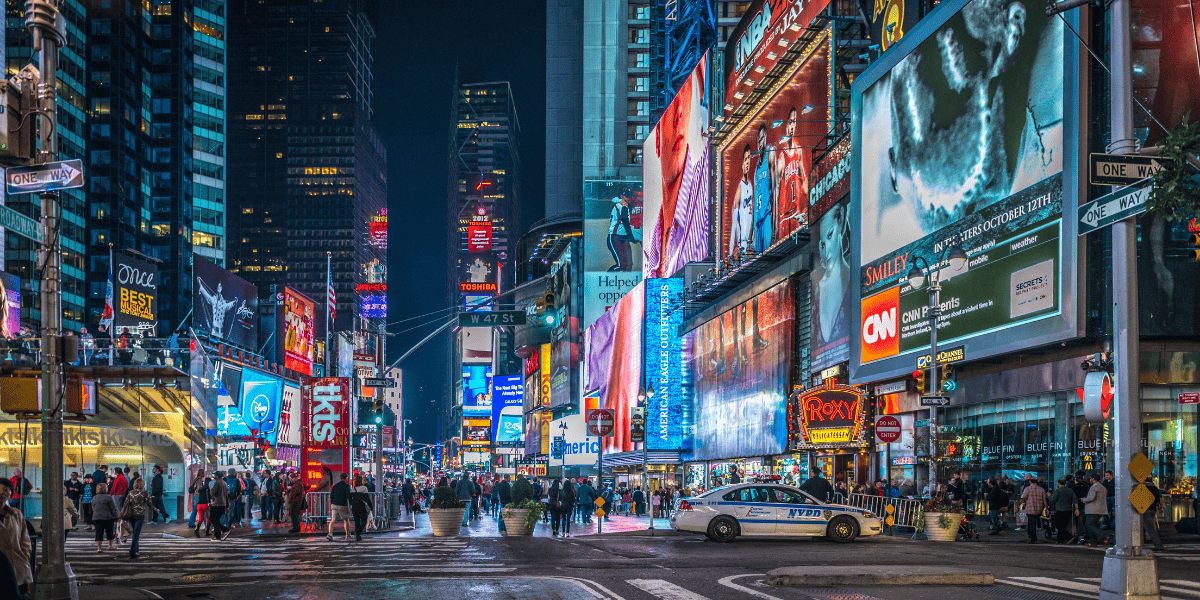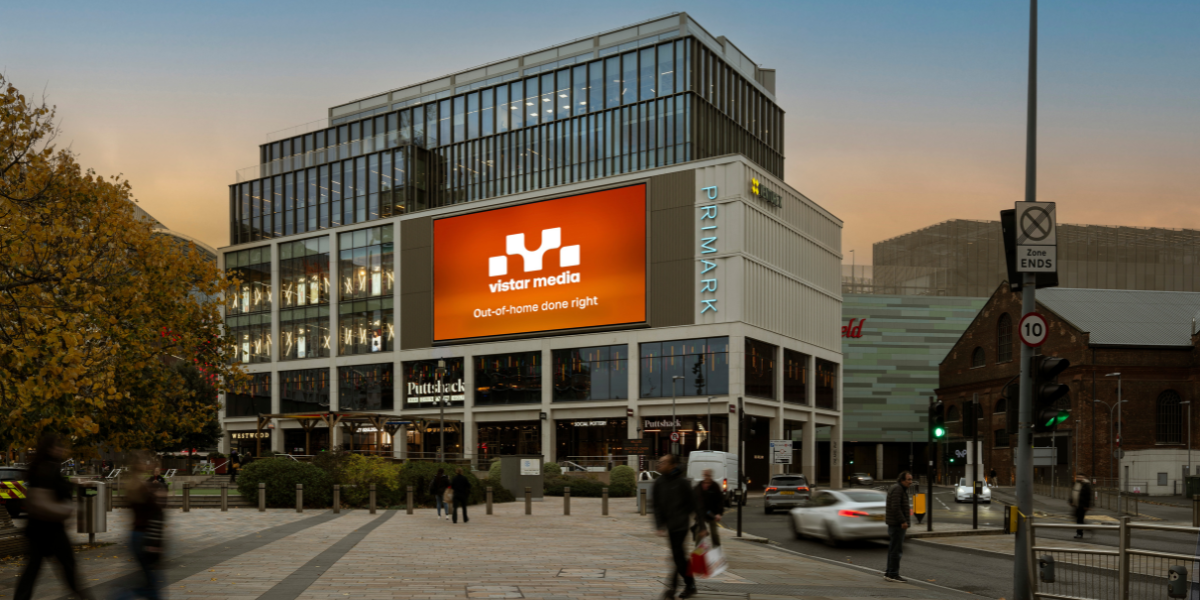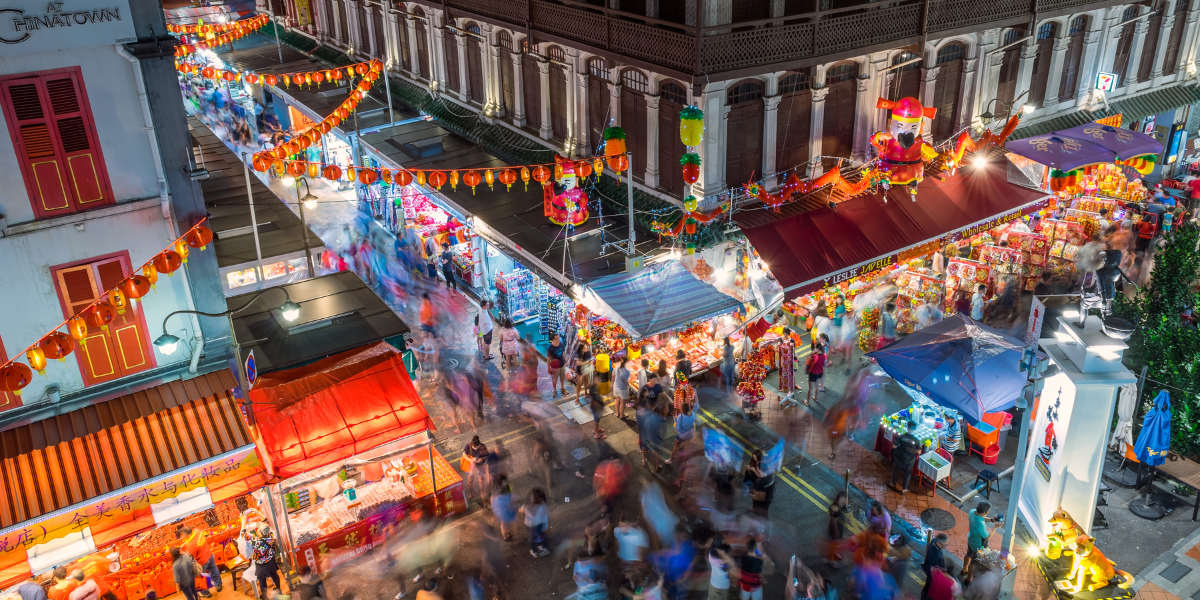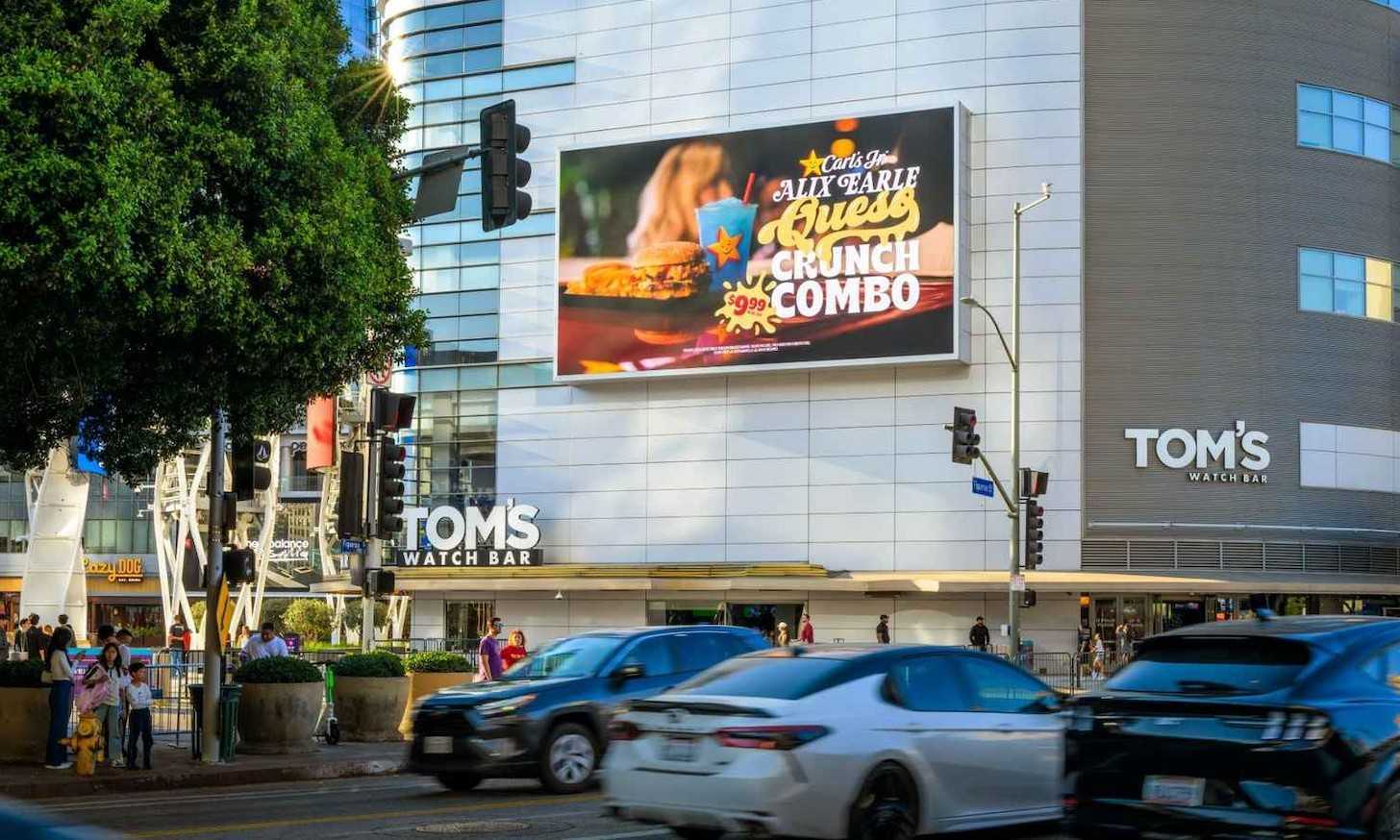
In the hustle and bustle of our modern lives, it's hard to miss the captivating signs that line our streets, populate transportation centers and adorn malls. They seamlessly blend into our surroundings, subtly inviting us in without disrupting the flow of our day — that's the magic of out-of-home advertising. In this blog, we are unpacking the advertising medium, exploring why it's so effective and uncovering the latest trends shaping this dynamic industry.
Out-of-home (OOH) advertising is any form of paid media that reaches people outside of their homes. The OOH meaning in marketing, in other words, boils down to advertising through formats such as billboards, ads on public transportation, and street furniture like bus shelters and benches. It also includes digital screens in public areas, urban murals and more. Unlike other forms of advertising confined within a virtual universe, OOH ads bring a brand to life in the physical world, seamlessly weaving your brand story into consumers' daily lives.
Why is out-of-home advertising important for a marketing plan?
OOH in marketing has been around for a long time, with centuries of history to prove its success. Ancient Egyptians used papyrus to create posters, and ancient Romans painted walls and stone tablets, all to advertise. As history continued, so did the out-of-home medium.
So, why is it still used today? Because it works. That's why 80% of consumers research a brand or product after seeing an OOH ad, and globally, the average CPM for an OOH ad is $6.41 compared to $12.20 for the same audience from media as a whole.
Out-of-home advertising gives you:
- Higher visibility: OOH advertisements are usually found in prominent and easily noticeable locations. Whether it is a billboard on a highway or a digital screen in a shopping mall, they reach people where they live, work, and play.
- 24/7 exposure: Unlike other forms of advertising, like online displays, OOH ads can't be turned off or blocked. They provide continuous exposure to audiences throughout the day, increasing brand visibility and message recall.
- More room for creativity: OOH allows you to get big and get creative. Traditional, printed formats enable you to think outside the box, while digital formats offer dynamic and interactive elements, allowing you to create engaging experiences that leave a lasting impression.
- More context: Whether placing ads in a mall to drive foot traffic or targeting morning commuters on a highway, OOH gives your ad more context because you can place it where it's most relevant.
Traditional vs. digital billboards and signage
Traditional out-of-home marketing has long been a staple in advertising. These static displays are perfect for capturing attention with always-on creatives. It is the way to go if you aim to maximize brand awareness and establish a strong presence.
On the other hand, digital out-of-home (DOOH) advertising introduces a new dimension of flexibility and interactivity to the OOH landscape. DOOH offers the ability to display dynamic content, tailoring messages based on factors like time of day, weather conditions, or even audience demographics. Many digital signs also allow video advertising. This targeted approach enables you to reach specific audience segments with relevant and timely messaging, leading to higher engagement and conversion rates — all with minimal media waste.
By combining the broad reach and enduring impact of traditional OOH with the targeted precision of DOOH, you can create a well-rounded strategy that maximizes exposure and drives measurable results.
Out-of-home advertising trends
The rise of digital out-of-home media
While DOOH has been around for a few decades, its capabilities have exponentially grown over the last few years. From retargeting and audience segmentation to interactive experiences, there's always something new coming out about the medium.
One of the most significant advantages of the OOH industry going digital is that it no longer needs to be siloed from other major marketing tactics. While online digital marketing dominates many advertising discussions, DOOH complements digital efforts by providing offline touchpoints that reinforce brand messaging. It creates a cohesive and multi-channel marketing approach, enhancing brand reach, visibility, recall and, ultimately, results.
Personalization and targeting

The rise of DOOH has also created new personalization and targeting capabilities. As a marketer, you can now use data to narrow your targeting and capture the right audience. It allows you to show up in the right place and time, making your ad resonate with the right audience.
Going further, dynamic creative means that creatives themselves can automatically change depending on the audience or location around them. Instead of static, one-size-fits-all ads, dynamic creative in DOOH campaigns serves personalized messages leveraging real-time data feeds. That makes including the nearest store location or a promotional countdown easy and scalable.
Experiential marketing and immersive experiences

Experiential marketing and out-of-home advertising are the perfect combination to create memorable and immersive experiences. These experiences allow the audience to interact with your brand. They can take many forms, including interactive installations, pop-up events, virtual reality experiences and more. They drive brand awareness and foster a sense of belonging between the brand and the audience.
3D out-of-home creatives
Many creative teams and marketers take the "real-world" concept of out-of-home advertising very seriously by (figuratively) going beyond the signage with 3D animations. These eye-catching displays can stand out amidst the noise of urban environments, engaging viewers in a captivating and memorable way.
3D creatives have the potential to make someone stop and engage genuinely. These ads also lead to social sharing, extending an ad's reach beyond its physical location.
Activating your out-of-home campaign
As you search for effective ways to capture your audience, one thing is clear: OOH advertising continues to be a powerful tool for brands seeking to connect with consumers in the physical world. The possibilities for engaging audiences are endless, from towering billboards to interactive digital displays.
The power of OOH advertising goes beyond mere visibility; it's about creating meaningful connections with your audience and leaving a lasting impression that resonates long after that first encounter. Whether it's through striking visuals, compelling storytelling, or immersive experiences, out-of-home campaigns can captivate in ways that other advertising channels can't match.
Get started with OOH advertising today
Ready to enhance your brand's visibility and create meaningful connections? We’re here to help. Set up a meeting with our team for more information on traditional and digital OOH advertising.




